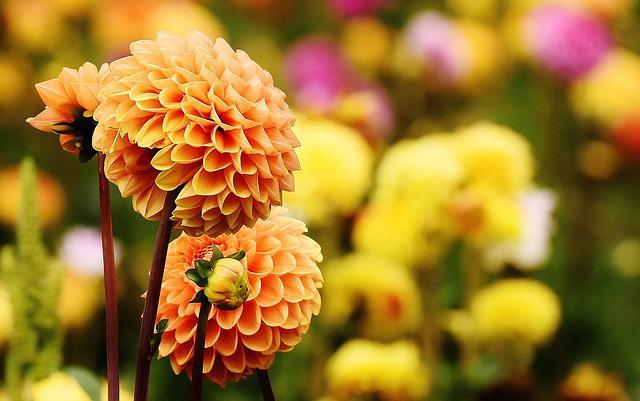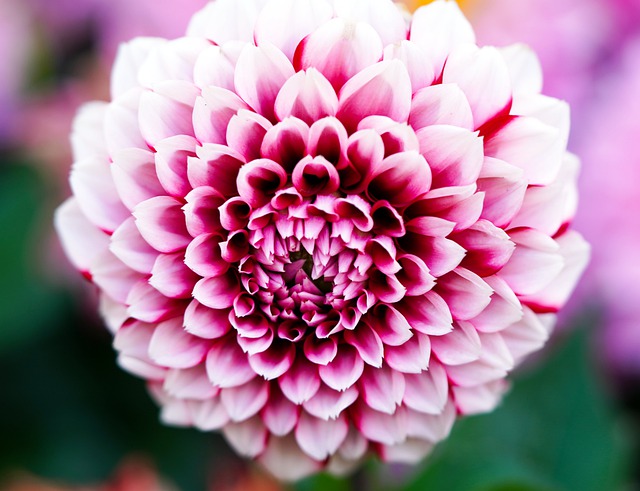How To Grow Dahlia From Seed: A Beginner’s Guide!

Gather your dahlia seeds and prepare a well-draining container seed tray. A ratio of 2:1 should be used when filling the container with high-quality organic compost placed in the ground. Plant two seeds directly in the middle of a container. Use your fingers to press the seed just a little bit through the soil, and then cover it up completely with soil from the surrounding area. Immediately after watering the seed, sow it.
You might have been curious about dahlias but didn’t know where to start. We’ll walk you through much more detailed yet easy for beginners like you to grow dahlias from seed. So without further ado, let’s get started!
Table of Contents
Growing Dahlias with Seeds
The process of growing Dahlias from seed is very simple. All you need is a little bit of love and patience. . You can buy Dahlia seeds at most garden stores or online, or you can grow them from seed yourself by following these steps:
What You Need:
- Dahlia seeds
- Seed tray or small pots
- Multi-purpose, peat-free compost
- Label and pencil
- Clear polythene bags, Optional
Instructions:
- The gathering of mature pods that are prepared for planting is the initial step in the process of growing dahlias from seed. The pods each contain a great number of seeds. Wait until the flower has shed all of its ray petals, and the pod has turned into a color somewhere between tan and green. The seeds on the inside ought to be ripe and anywhere from gray to dark brown.
- Remove the seed pod and allow it to dry out so the seeds can be removed more easily. After separating the seed from the rest of the pod, the seed should be allowed to dry completely before being stored. Germinating the seeds in a soilless seed-starting mixture in flats should be done in the early spring.
- Plant your seeds on top of the mixture at a distance of one inch (2.5 centimeters) apart, and then lightly cover them with a dusting of the medium. After moistening the medium and ensuring it remains only slightly damp, move the flats to a warm location of at least 70°F (21°C.). After sowing, the germination process will take between 7 and 12 days to complete.
- When the seedlings have grown large enough for their leaves to touch, it is time to pot them up in individual containers measuring 3 inches (7.5 cm).
- Acclimate the seedlings to their environment before planting them in garden beds that have been prepared. Hold off on planting them outside until all risk of frost has passed before you do so.
- You also can plant them outside one week before the average date of the final frost in your area. If you do this, the plants may not have enough time to mature and bloom in northern climates.
- However, it is very effective in regions with long seasons. At the end of the summer, if there is a chance that temperatures will drop below freezing, you should repot the plants and bring them either into a greenhouse or indoors.
- They won’t develop very many tubers, so the best way to preserve them for the following year is to allow them to go dormant indoors, where the freezing temperatures won’t be able to harm the delicate root and tuber system. After one more season of hardening off, you can plant them outside. You will end up with large, gorgeous plants covered in a profusion of alluring flowers and produce pods, which will trigger the process of growing dahlia seeds all over again.

Dahlia Seeds vs. Bulbs: Which is Better?
Tubers of dahlias can be found in various nurseries and seed catalogs. They are the method that is both the quickest and most reliable in producing large, boisterous blooms. Growing the flowers from dahlia seed rather than from bulbs may take a little bit more time, but it is a fantastic way to extend the supply of the available dazzlers. It is not difficult to learn how to plant dahlia seeds, but there are a few things you must keep in mind to ensure success and have riots of colorful blooms. Dahlias can be grown inexpensively and consistently from seed if you save them from season to season.
To be more specific, dahlias develop from underground organs called tubers, similar to bulbs in that they are also storage organs and contain the DNA or blueprint of the plant. The offspring produced through vegetative methods of propagation are genetically identical to their parent plant. On the other hand, the offspring produced through seeded methods are subject to the whims of nature and may look slightly different. Starting dahlia seeds indoors is not a technique that collectors and champion breeders prefer to use.
Dahlia plants produce a prodigious amount of flower seeds. Still, most gardeners choose to save the tubers instead of the seeds and replant them the following year as a failsafe method of maintaining the desired species. On the other hand, the daring gardener might want to store away some of that seed to see what the following year brings. This flower may be more beautiful and elegant than its parent did.
